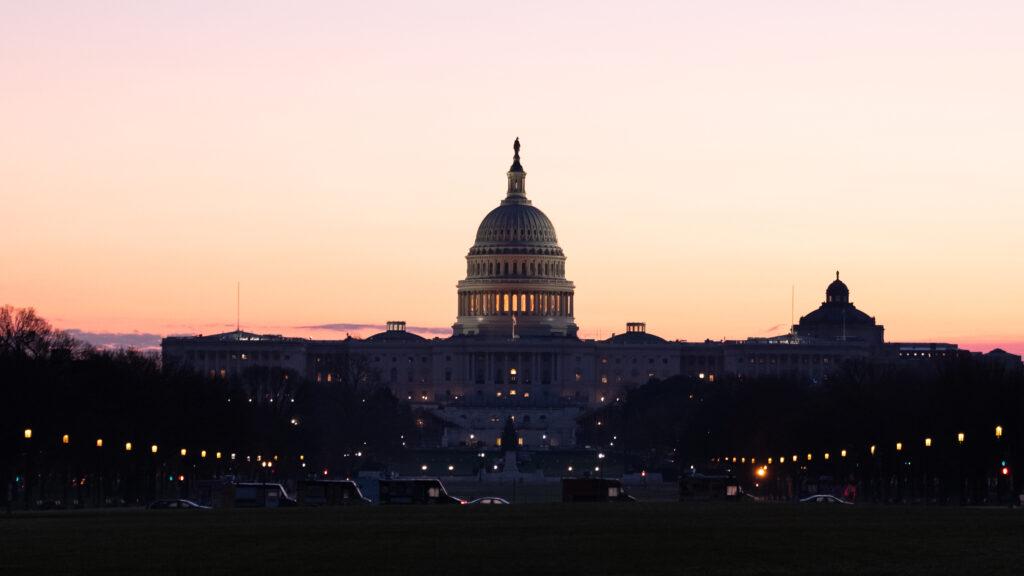Washington, D.C., which once had among the lowest COVID-19 case rates in the United States, now has among the highest rates of infection in the nation.
The District reported a daily average of 1,969 COVID-19 cases as of Jan. 9, marking a 3,330% increase in cases since Thanksgiving, and a 7-day average of 422 hospitalizations. The omicron variant, which is more transmissible and accounts for 95% of COVID-19 cases in the United States as of Jan. 1, according to models, is responsible for this COVID-19 surge. The District reported its first four cases of the omicron variant Dec. 12.
The rapid increase in cases may be caused by holiday travel, a sense of invincibility surrounding vaccines and low case rates prior to the spread of the omicron variant, according to a spokesperson from the D.C. Department of Health.

“From an epidemiology point of view these kinds of fluctuations are not uncommon especially given the pathophysiology of omicron which is much more infectious and leads to a faster spread in areas like DC with dense populations and that serve as travel ‘hubs’ for both local and international visitors,” the spokesperson wrote in an email to The Hoya.
D.C. Mayor Muriel Bowser (D) lifted the indoor mask mandate Nov. 22 before reinstating it Dec. 21 amid the surge in COVID-19 cases.
Fewer restrictions caused the District to become an epicenter for COVID-19 infection and the omicron variant, according to Rosemary Sokas, human science and family medicine professor at Georgetown.
“D.C. implemented strict measures early on, which helped, and has been loosening up lately, which turned out to have been premature,” Sokas wrote in an email to The Hoya.
The District will require proof of at least one vaccination to enter indoor food and drink establishments, entertainment venues, recreation facilities and conference spaces beginning Jan. 15, with a second dose required by Feb. 15, in an effort to slow transmission.
Georgetown University implemented measures to limit COVID-19 transmission, including transitioning dining locations to a grab-and-go model, closing fitness centers and canceling or moving university-sponsored events outdoors, as on-campus cases increased at the end of the fall semester. The spring semester will begin with virtual classes and the continuation of grab-and-go dining services in an effort to prevent further transmission as students return to campus.
About 67.5% of D.C. residents are fully vaccinated, not including a booster shot. But the booster provides more protection against the omicron variant, decreasing the risk of a symptomatic COVID-19 case by about 63%.
In order to stop the COVID-19 surge, people must be fully vaccinated and get a booster shot, according to the spokesperson from the D.C. Department of Health.
“The number that should be looked at when considering herd immunity is fully vaccinated with a booster,” the spokesperson wrote. “This is the benchmark we need to focus on and reach for since CDC data suggests that individuals with a booster are 20x less likely to get infected compared to unvaccinated and 2.5x less likely to get infected compared to fully vaccinated individuals.”
Despite the District’s relatively high vaccination rate, breakthrough cases are still a possibility and are contributing to the recent surge, especially among those who have not received a booster shot, according to Sokas.
“We know from the testing Georgetown has been conducting that asymptomatic and presymptomatic cases occurred last semester despite an enviable 97-98% vaccination rate because of breakthrough cases,” Sokas wrote. “Fortunately, people did not get severely ill (and many had no symptoms), but they were nevertheless able to spread the virus to others.”
The pandemic is not over in the District, so residents need to be cautious in order to limit transmission as case rates continue to climb, according to the spokesperson from the D.C. Department of Health.
“It is important to remain vigilant and continue utilizing layered prevention strategies,” the spokesperson wrote. “This includes masking, social distance when possible, and getting fully vaccinated and boosted.”




















